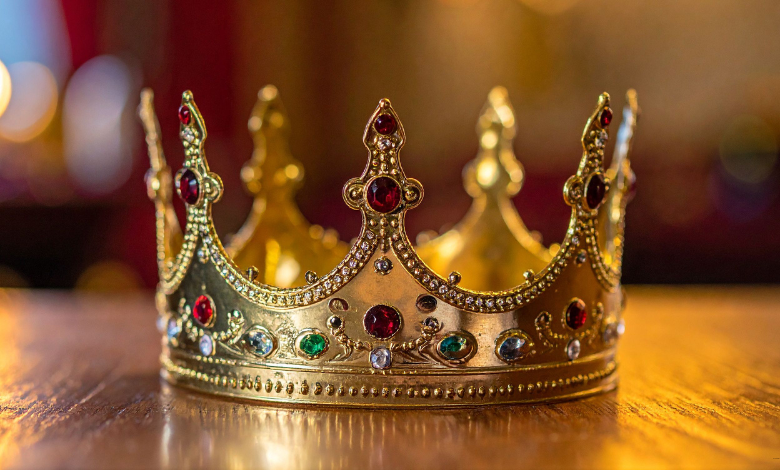Vandalism of British Crown Jewels: A History of Risk, Protection, and Restoration

I’m going to start by saying something personal: whenever I visited the Tower of London and stood before the display of the Crown Jewels, I felt a mix of awe and tension. Awe because these objects are more than trophies—they represent centuries of monarchy, power, symbolism. Tension because I could imagine the fear those guarding them must feel: what if someone tried to damage them?
Vandalism is often thought of as spray paint on a wall, or graffiti defacing a statue. But when the target is the Crown Jewels—objects of immense historical, cultural, and monetary value—it becomes a different kind of threat. This isn’t just defacement; it’s an attack on national identity, on heritage, on symbols loaded with meaning.
In this article, I want to explore that risk. We’ll walk through the history of the Crown Jewels, past attempts to steal or damage them, modern examples of vandalism or protest, how security has evolved, what happens when damage occurs, and what lessons we can draw. I’ll try to make it readable, even for someone new to these topics, and I’ll share insights—some drawn from my own reflections—along the way.
2. A Short History of the Crown Jewels
To understand why vandalism matters, you first need to grasp what the Crown Jewels are.
What are the Crown Jewels?
The British Crown Jewels (also called “the regalia” or “royal regalia”) are a set of crowns, sceptres, orbs, rings, robes, and other ceremonial items used primarily during coronations and state ceremonies. They include objects like St Edward’s Crown, the Imperial State Crown, the Sovereign’s Sceptre, the Coronation Spoon, and many others.
Many of the current pieces date not from medieval times but from after the Restoration (when monarchy was brought back) in the 17th century. Some pieces predate that, like the Coronation Spoon (likely 12th century).
Why so many newer items? Because the original medieval regalia often got destroyed, sold, melted down, lost, or repurposed over centuries.
Destruction and Rebuilding
One of the darkest moments in the regalia’s history came in 1649, after King Charles I was executed. The English Parliament, under Cromwell, ordered that the Crown Jewels be “totally broken,” considering them symbols of monarchy they sought to abolish. The gold was melted, precious stones sold, and many items destroyed.
When the monarchy was restored with Charles II, new regalia had to be made, and that forms much of what still exists today.
That tumultuous past means that the Crown Jewels we see now are partly recreations, partly survivors, but all carrying deep symbolic weight.
Read Also: Who Is EliyasNachos Jonah? The Story Behind an Online Mystery
3. Past Attacks & Vandalism Attempts
If you look into the history of the Crown Jewels and related royal regalia, several incidents stand out as “vandalism” or damage attempts—some successful, some not.
Colonel Blood’s 1671 Theft Attempt
One of the most famous episodes involves Colonel Thomas Blood in 1671. He and accomplices attempted to steal the Crown Jewels from the Tower of London. In the struggle, they attacked the Jewel House keeper and his family, seized the Imperial State Crown, the Orb, and a sceptre, and tried to escape.
During the scuffle, the crown itself was reportedly “flattened” by a mallet, a large pearl and diamond fell off temporarily, and smaller stones were lost, though many were later recovered. The damaged crown was repaired later.
What’s remarkable is that Blood was pardoned by King Charles II and even granted lands—a twist no one foresaw.
This act is more theft than pure vandalism, but the damage to the regalia definitely qualifies.
Destruction During the English Civil War
As mentioned earlier, in 1649, Parliament ordered the destruction of the Crown Jewels: frameworks melted, gemstones sold. This was state-level vandalism—deliberate, systematic. Much of what we think of as the “original” regalia was lost in this episode.
One piece that survived this destruction was the Coronation Spoon, which escaped melting or sale. That makes it the oldest surviving crown piece.
Graffiti, Defacement, and Other Damage Incidents
Over centuries, visitors and activists have left marks on royal artifacts and places associated with the regalia. A famous target is the Coronation Chair, which is used in every British coronation (including the latest).
The chair has graffiti: names carved by schoolboys or tourists from the 18th and 19th centuries. One example: “P. Abbott slept in this chair 5-6 July 1800” carved into the back or seat.
There was also a bomb attack in 1914 (linked to suffragettes) which chipped a small corner off that chair.
More recently, in November 2024, protestors damaged the display case containing the Stone of Destiny (which is closely linked to the Crown Jewels and Scottish coronation tradition). They sprayed Gaelic slogans on the glass housing it.
In that incident, the tour guide pressed a panic button, and security intervened. The damage was confined to the protective glass rather than the artifact itself.
That shows a modern form of vandalism: not always targeting the object itself, but its protective housing.
4. Modern Example: Protests & Damage
Let’s dive deeper into the recent example, because it illustrates how complex the risk is today.
In November 2024, a group of protestors from an organization named This Is Rigged were being guided through the Crown Jewels / regalia area in Edinburgh Castle. One protestor stood in front of the cabinet housing a crown and the Stone of Destiny, and used spray paint to write “The people are mightier than the Lord” in Gaelic on the glass display.
The damage was to the protective glass casing, not to the artifacts themselves, but it’s still serious: that glass is the first line of defense. The price of repairs to the glass was estimated, and the case was reopened in court.
This case is interesting because:
-
It shows how protest groups might target symbols rather than steal.
-
The damage was limited but symbolically powerful.
-
The protection system (glass, alarms, guides) did its job to some extent.
-
It forced a public conversation: how secure should such heritage sites be, and how to respond to protest actions?
Though not about the English Crown Jewels in the Tower, it’s analogous—similar risks apply to any display of royal or national treasures.
5. How the Crown Jewels Are Protected Today
Given the threats, it’s vital to understand how the Crown Jewels are currently secured. Over centuries, security has evolved a lot.
The Tower of London & Jewel House
Today, the British Crown Jewels are housed in the Jewel House within the Tower of London. The Tower is itself a heavily fortified historic fortress, giving a first layer of defense.
The modern Jewel House was rebuilt in the 1990s to integrate high security with visitor access.
Physical & Technological Protections
Some of the key elements of protection include:
-
Bulletproof, laminated, multi-layered display glass
The crowns and regalia are behind strong glass. Anyone attempting to smash or scratch it has to breach multiple layers. -
Climate control & vibration sensors
The environment is stabilized (humidity, temperature) because precious metals and gemstones are sensitive. Vibration sensors monitor for sudden shocks (e.g. someone hitting or jarring). -
Alarm systems & motion detectors
If the display is touched, moved, or glass is broken, alarms trigger immediately. -
CCTV & video monitoring
Cameras cover all angles, constantly watched by security staff. -
Physical barriers & distance
Visitors cannot approach too closely. Glass or railings keep a buffer zone. -
Armed guards & Yeoman Warders (Beefeaters)
The Tower has its own guard force. The Yeoman Warders are more ceremonial now, but security is serious behind the scenes. -
Security staff & visitor screening
Bags may be checked, tours escorted, guides trained to respond to threats.
Because the regalia is priceless and symbolic, security must be redundant (i.e. multiple layers should fail before the object is at risk).
6. Risks, Motives & Threats
To truly understand the danger of vandalism, we must look at why someone would target the Crown Jewels, and how they might do it.
Why vandalize or damage royal regalia?
-
Political protest & symbolism
The regalia stand for monarchy, colonial power, national identity. Activists might target them to make a statement. -
Thrill, impulsiveness, vandal culture
Some perpetrators want notoriety or adrenaline. -
Extremism or ideological motives
Groups rejecting monarchy, colonial legacies, or certain institutions might see the Crown Jewels as symbolic targets. -
Insider attacks or negligence
People who work in or around the site may make mistakes, or worse, sabotage. -
Accidental damage
A tourist leans too close, a tool slips, or glass fails—some “damage” is not malicious but still harmful.
Threat vectors & vulnerabilities
-
Insider threats (employees, contractors)
Someone with authorized access could bypass external security. -
Physical breach (tools, force)
Mallets, hammers, chisels can crack glass, break locks. -
Chemical attack
Acid, corrosives, solvents could potentially target surfaces or coatings. -
Vibration / shock attacks
Attempts to shake or jolt the display to dislodge artifacts or sensors. -
Long-term degradation or neglect
Security systems degrade over time unless maintained. -
Technological hacking
Disabling alarms, cameras, sensors via cyber means.
Comparing with other artifact targets (museums, libraries), the same patterns appear: insider risk, failure of layers, underinvestment in security, or surprise tactics.
7. Case Studies of Vandalism or Attempted Damage
Beyond the Scottish/Edinburgh example, let’s survey some cases and analogies.
Edinburgh / Stone of Destiny case (2024)
Already discussed above: protestors writing on the glass casing. It’s a modern example of how display protection, visitor management, and surveillance enabled mitigation: the artifact wasn’t destroyed.
Coronation Chair Graffiti & Bomb Attack
The Coronation Chair (used in Westminster) has had graffiti carved over centuries by visitors and schoolboys. In 1914, an attempted bomb attack (linked to suffragette movements) knocked off a small corner.
This shows how even integral furniture related to coronations has been a target of defacement and sabotage.
Museum and Public Artifact Vandalism (Analogies)
While not royal regalia, many museums worldwide face vandalism. For instance:
-
Graffiti on statues, spray paint on exhibits, scratching glass.
-
Attackers targeting historic objects in public buildings.
-
Demonstrations where activists deface symbols (statues, memorials) to raise awareness.
-
In the UK, tougher penalties have been considered for vandalism of memorials and public artworks.
These analogies help because the safeguards, motivations, and responses are similar.
8. Restoration, Repair & Legal Consequences
If vandalism occurs, the steps afterward are crucial: repair, accountability, learning.
Restoration / Repair
Restoring or repairing damage to royal regalia or their display systems is delicate work:
-
Assessment & documentation
Every scratch, crack, or lost stone is documented with high-resolution imaging, spectrometry, and archival research. -
Conservation ethics
Conservators aim to preserve as much original material as possible. Replacement is minimal and reversible when possible. -
Specialist materials & craftsmanship
Jewelers, glass experts, metalworkers must replicate original styles, techniques, and materials. -
Testing & monitoring
Repairs are tested (stress tests, shock resistance). The restored item is monitored closely for stability. -
Reinforcement & upgrade
If the attack exposed a weak point (e.g. weak glass), that layer is replaced with a stronger system, or a redundant backup added.
Because these are one-of-a-kind objects, often centuries old, damage repair is complex, expensive, and must balance authenticity with durability.
Legal Consequences in the UK
In the UK, vandalizing Crown property or heritage property is a serious offence:
-
Criminal damage laws apply.
-
Aggravated offences may carry higher penalties when the target is a listed monument or state asset.
-
Restoration cost, public interest, symbolic value all influence sentences.
-
In recent years, there have been calls for stricter penalties for defacing public monuments, memorials, or iconic symbols.
In the Edinburgh case (Stone of Destiny), the protesters were charged with malicious damage and faced community service, fines, or repair orders.
Historically, though, some acts escaped harsh punishment—Colonel Blood was pardoned in 1671.
Legal consequences also serve as deterrents and reaffirm the value society places on heritage.
9. Lessons & Recommendations
After reviewing history, damage, and protection, what lessons emerge? And what can institutions do?
Key Lessons
-
No single layer of security is foolproof. Redundancy matters.
-
Proactive maintenance and upgrading of security infrastructure is essential.
-
Access should be carefully managed: guided tours, restricted zones, vetted staff.
-
Public awareness matters: when people understand the value, vandalism feels more outrageous.
-
Response readiness is vital: alarm + staff training + quick restoration planning.
-
Balancing access & security is delicate but necessary: hiding artifacts entirely deprives the public.
Recommendations
For royal institutions, museums, and heritage sites:
-
Conduct threat assessments regularly
Review evolving threats (political protests, insider risk, tech hacking). -
Invest in security upgrades
New glass, sensors, redundancy, backup power, fail-safes. -
Train staff for emergency response
What to do during attempted damage, evacuations, securing artifacts. -
Strict access control & vetting
Especially contractors, maintenance staff, visitors. -
Public education & narrative
Use signage, guided talks, media to explain why these artifacts matter. -
Legal clarity & deterrents
Work with government to ensure strong penalties and publicized consequences. -
Recovery & demand readiness
Keep restoration budgets, conservation teams, and incident protocols ready. -
Collaboration across institutions
Share lessons with other museums, state collections, security experts.
If I were advising a heritage institution, I’d stress not just “stop all access” because that kills engagement—but to raise the barrier so high that attacks are almost impossible, and response swift.
10. Conclusion
The Crown Jewels are not just glittering objects—they embody history, monarchy, national identity, and public fascination. Vandalism against them is never a trivial act; it strikes at symbolic power, heritage, and trust.
Through history, we’ve seen destruction (like in the English Civil War), bold theft attempts (Colonel Blood), and modern protest damage (Edinburgh). Each incident teaches us something about vulnerability: human intent, weak layers, or symbolic targeting.
Today, security is far more advanced—with reinforced glass, sensors, surveillance, and guarding. But risks continue: protestors, insiders, technology threats, negligence. The key is to layer protections, prepare for incidents, maintain transparency with the public, and treat heritage with reverence.
Visiting the Crown Jewels remains a powerful experience. My hope is that as people walk past those gleaming crowns and sceptres behind their protective glass, they carry not just wonder—but respect for how fragile, valuable, and vulnerable those treasures really are.
FAQ (Frequently Asked Questions)
Q: Has the British Crown Jewels ever been successfully stolen or destroyed?
A: The original medieval regalia were destroyed or sold in 1649 under Parliament. A famous theft attempt by Colonel Blood in 1671 seized some items and damaged the crown, but it wasn’t fully successful—the artifacts were recovered.
Q: Are the Crown Jewels still used today?
A: Yes. They are used in coronation ceremonies and some state occasions.
Q: What modern incidents of vandalism have occurred?
A: In November 2024, protestors sprayed paint on the glass casing of the Stone of Destiny display at Edinburgh Castle. Also, the Coronation Chair has graffiti and was slightly damaged in a 1914 bomb attack.
Q: How is the Crown Jewels protected now?
A: Through a combination of fortified location (Tower of London), bulletproof glass, alarms, CCTV, motion sensors, staff, guided tours, and strict visitor controls.
Q: What happens if someone vandalizes the Crown Jewels?
A: They can face criminal charges under UK law for malicious damage, fines, restoration orders, or community service. The institution will repair damage with expert conservation.



